
Enchanting Wilderness: Killarney National Park
Discover the magical blend of mountains, lakes, and ancient woodlands in Killarney National Park, a UNESCO Biosphere Reserve in the heart of County Kerry, Ireland.
Killarney National Park, located in County Kerry, Ireland, is a haven of natural beauty and tranquility. Renowned for its stunning landscapes, this park offers a mix of mountains, lakes, and woodlands that will captivate any nature enthusiast. The park is home to the highest mountain range in Ireland, the MacGillycuddy Reeks, and the iconic Lakes of Killarney, which are a must-see for any visitor. With over 26,000 acres to explore, Killarney National Park offers an array of activities for all interests. Hiking trails of varying difficulty levels wind through the park, offering breathtaking views and opportunities to spot local wildlife, including red deer and white-tailed eagles. The park's diverse flora includes ancient oak and yew woodlands, which are among the few remaining native forests in Ireland. History buffs will be delighted with the park's rich heritage sites. The 15th-century Ross Castle, standing majestically on the edge of Lough Leane, provides a glimpse into Ireland's medieval past. Muckross House and Gardens, a Victorian mansion set amidst lush gardens, offers a fascinating look into the life of the Irish gentry in the 19th century. The park is also a UNESCO Biosphere Reserve, highlighting its importance for conservation and research. For a peaceful and immersive experience, visitors can take a boat trip on the Lakes of Killarney or enjoy a traditional jaunting car ride through the scenic surroundings. Whether you are seeking adventure, relaxation, or a journey through history, Killarney National Park has something to offer.
Local tips in Killarney National Park
- Visit early in the morning to avoid crowds and enjoy the serene beauty of the park.
- Wear comfortable walking shoes, as many trails can be uneven and challenging.
- Bring a raincoat or waterproof clothing as the weather can be unpredictable.
- Check the visitor center for guided tours and educational programs.
- Don't miss the boat tours on the Lakes of Killarney for a different perspective of the park.
- Pack a picnic to enjoy in one of the many picturesque spots within the park.
- Keep an eye out for local wildlife, especially the red deer and white-tailed eagles.
Enchanting Wilderness: Killarney National Park
Killarney National Park, located in County Kerry, Ireland, is a haven of natural beauty and tranquility. Renowned for its stunning landscapes, this park offers a mix of mountains, lakes, and woodlands that will captivate any nature enthusiast. The park is home to the highest mountain range in Ireland, the MacGillycuddy Reeks, and the iconic Lakes of Killarney, which are a must-see for any visitor. With over 26,000 acres to explore, Killarney National Park offers an array of activities for all interests. Hiking trails of varying difficulty levels wind through the park, offering breathtaking views and opportunities to spot local wildlife, including red deer and white-tailed eagles. The park's diverse flora includes ancient oak and yew woodlands, which are among the few remaining native forests in Ireland. History buffs will be delighted with the park's rich heritage sites. The 15th-century Ross Castle, standing majestically on the edge of Lough Leane, provides a glimpse into Ireland's medieval past. Muckross House and Gardens, a Victorian mansion set amidst lush gardens, offers a fascinating look into the life of the Irish gentry in the 19th century. The park is also a UNESCO Biosphere Reserve, highlighting its importance for conservation and research. For a peaceful and immersive experience, visitors can take a boat trip on the Lakes of Killarney or enjoy a traditional jaunting car ride through the scenic surroundings. Whether you are seeking adventure, relaxation, or a journey through history, Killarney National Park has something to offer.
When is the best time to go to Killarney National Park?
Iconic landmarks you can’t miss
Ireland
Experience the breathtaking beauty and rich culture of Ireland, the Emerald Isle, where lush landscapes and vibrant traditions await every traveler.

Muckross House
Explore the enchanting Muckross House and its beautiful gardens in Killarney, a cultural gem showcasing Irish history and traditional crafts.

Ross Castle
Explore Ross Castle, a stunning 15th-century fortress in Killarney, surrounded by breathtaking landscapes and rich history.

Torc Waterfall
Explore the enchanting Torc Waterfall in Killarney National Park, a stunning natural wonder surrounded by lush landscapes and serene beauty.

Ladies' View Gift Store Cafe Bar & Roof Terrace
Discover the charm of Ladies' View Gift Store Café Bar & Roof Terrace, where shopping meets stunning views in the heart of Killarney.

Muckross Abbey
Explore the enchanting Muckross Abbey, a historic gem in Co. Kerry, surrounded by breathtaking landscapes and rich Irish heritage.

The Brehon Hotel & Spa
Experience luxury and tranquility at The Brehon Hotel & Spa, your gateway to the natural beauty of Killarney, Co. Kerry.

The Taproom at Killarney Brewing & Distilling Co.
Experience the rich flavors of Killarney with craft beers and gourmet pizzas at The Taproom, a must-visit brewery and brewpub.

St Mary's Cathedral
Discover the breathtaking beauty of St. Mary's Cathedral in Killarney, a stunning Gothic Revival masterpiece and a must-see tourist attraction.

Cronins Yard
Discover adventure and breathtaking landscapes at Cronins Yard, your gateway to Killarney National Park in Co. Kerry.

Muckross Park Hotel & Spa
Experience the elegance of Muckross Park Hotel & Spa, nestled in the heart of Killarney National Park, where luxury meets nature's beauty.
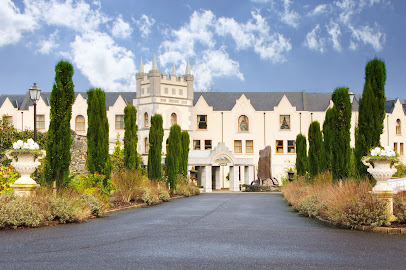
Wishing Bridge
Discover the magic of the Wishing Bridge in the stunning Gap of Dunloe, a must-visit attraction in County Kerry, Ireland.

Gleninchaquin Park
Discover the serene beauty of Gleninchaquin Park, a stunning natural landscape in County Kerry, perfect for outdoor adventures and breathtaking photography.
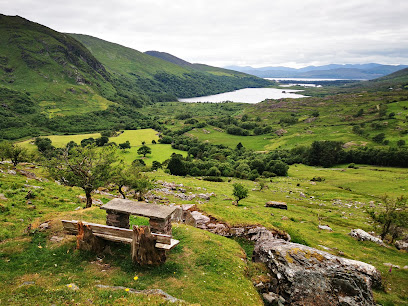
Knockreer Playground
Explore the magic of Knockreer Playground in Killarney - a perfect blend of fun, nature, and family-friendly activities await!

Head of the Gap of Dunloe
Discover the breathtaking views and rich heritage of the Gap of Dunloe, a stunning mountain pass in County Kerry, Ireland.

Unmissable attractions to see
Crag Cave
Explore the enchanting underground world of Crag Cave in Co. Kerry, where natural beauty meets family-friendly fun and local artisan shopping.

Bantry House
Discover the rich heritage and stunning vistas of Bantry House, a historic estate in scenic Bantry Bay, Co. Cork, perfect for tourists seeking beauty and tranquility.

Knockreer Playground
Discover the charm of Knockreer Playground in Killarney, a perfect blend of fun, relaxation, and natural beauty for all ages.

Killarney Racecourse & Ross Golf Course
Discover the excitement of horse racing and the serenity of golf at Killarney Racecourse & Ross Golf Course, set in breathtaking landscapes.
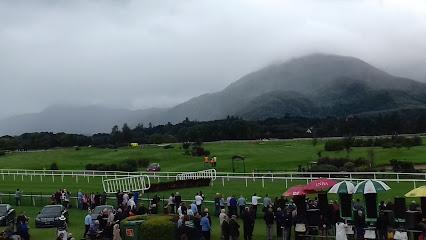
Killarney Lake Tours
Explore the serene beauty of Killarney Lake Tours, where breathtaking landscapes and rich history come to life on tranquil waters.

Bonane Heritage Park
Discover the enchanting Bonane Heritage Park, a treasure trove of Ireland's history and nature in County Kerry's stunning landscape.

The Kerry Creamery Experience
Experience the heart of Irish dairy farming at The Kerry Creamery, where tradition meets taste in a delightful educational setting.

Kilgarvan Motor Museum
Discover the fascinating world of vintage automobiles at Kilgarvan Motor Museum, where history and passion for cars come together in scenic County Kerry.

O'Sullivans Cascade
Experience the breathtaking beauty of O'Sullivans Cascade in Co. Kerry, a serene natural park with stunning waterfalls and lush landscapes.
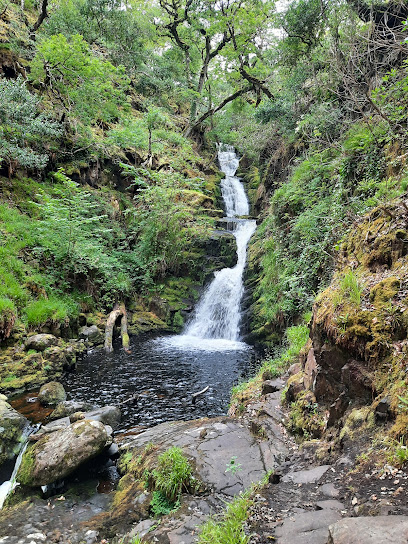
Killarney Races
Discover the excitement of horse racing, golf, and sports at Killarney Races, a must-visit destination in the heart of Co. Kerry.

Lily of Killarney Watercoach
Experience the beauty of Killarney National Park with scenic boat rides at Lily of Killarney Watercoach, a true gem for nature enthusiasts.

Riverowenreagh (river view)
Discover the serene beauty of Riverowenreagh in County Kerry, a tranquil river view attraction perfect for nature lovers and peaceful retreats.

Brickeen Bridge
Explore the historic and picturesque Brickeen Bridge, a hidden gem by Lough Leane in Co. Kerry, perfect for nature lovers and photographers alike.
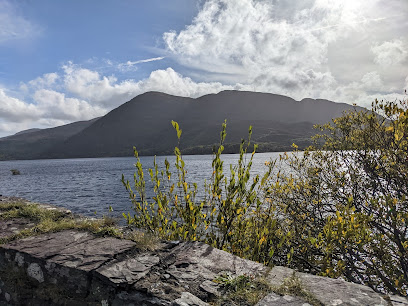
Auger Lake
Experience the tranquil beauty of Auger Lake in Co. Kerry, a perfect retreat for nature lovers and those seeking scenic landscapes.

Faugh, Muckross
Experience the serene beauty of Faugh, Muckross, a tranquil park in Killarney offering lush landscapes and peaceful pathways for nature lovers.

Essential places to dine
J.M. Reidy's
Discover authentic Irish culture at J.M. Reidy's in Killarney - a delightful pub offering delicious food and live music.

Murphys Bar, Restaurant & Townhouse Killarney
Discover the heart of Killarney at Murphys Bar & Restaurant—where traditional Irish hospitality meets delightful cuisine.

Porterhouse Restaurant
Experience authentic Irish cuisine at Killarney's premier gastropub - The Porterhouse Restaurant.

Cronins Restaurant
Discover Cronins Restaurant in Killarney – where local flavors meet warm Irish hospitality for an unforgettable dining experience.
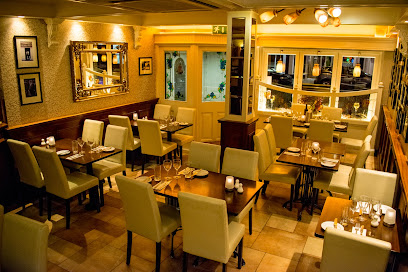
Celtic Whiskey Bar & Larder
Discover the essence of Irish culture at Celtic Whiskey Bar & Larder with exquisite whiskey selections and delicious gastropub cuisine in Killarney.
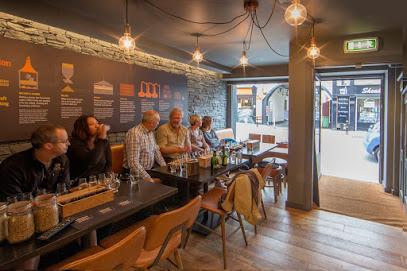
Caragh Restaurant & Lounge Bar
Experience the best of traditional Irish cuisine at Caragh Restaurant & Lounge Bar in Killarney - where flavor meets hospitality.

Bricín Restaurant and Boxty House
Discover the taste of Ireland at Bricín Restaurant and Boxty House - where tradition meets culinary excellence in Killarney.

Kitty O’Se’s Seafood and Grill Restaurant
Discover exquisite seafood dining at Kitty O’Se’s Seafood and Grill in Killarney—where fresh flavors meet Irish hospitality.

Hannigans Bar, Restaurant & Terrace
Discover Hannigans Bar & Restaurant in Killarney: A perfect blend of traditional Irish cuisine and lively ambiance awaits you.

The Mad Monk by Quinlans
Experience the finest seafood at The Mad Monk by Quinlans in Killarney – where freshness meets tradition in every bite.

Stonechat Restaurant
Discover a unique culinary experience at Stonechat Restaurant in Killarney, where Asian fusion meets Irish tradition in an inviting atmosphere.
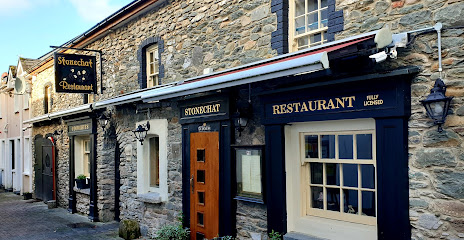
Flesk Bar & Restaurant
Experience authentic Irish cuisine at Flesk Bar & Restaurant in Killarney - where every dish tells a story.
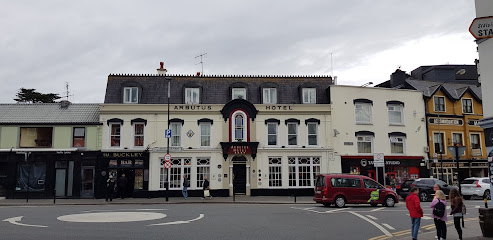
Muckross Garden Restaurant
Experience exquisite local cuisine surrounded by breathtaking landscapes at Muckross Garden Restaurant in Killarney National Park.

Colgans
Discover Colgans in Killarney: A charming gastropub offering authentic Irish cuisine and warm hospitality amidst beautiful surroundings.

Foley's Townhouse & Restaurant Killarney
Discover authentic Irish cuisine and warm hospitality at Foley's Townhouse & Restaurant in Killarney - your gateway to local flavors.

Markets, malls and hidden boutiques
Ladies' View Gift Store Cafe Bar & Roof Terrace
Experience the beauty of Killarney at Ladies' View Gift Store Cafe Bar & Roof Terrace, where shopping meets stunning views and delicious delights.

Killarney Outlet Centre
Shop smart at Killarney Outlet Centre, where brand-name fashion meets unbeatable prices in a vibrant shopping atmosphere.

Dunnes Stores
Discover a delightful shopping experience at Dunnes Stores in Killarney, combining fashion and groceries in one convenient location.

TK Maxx
Explore TK Maxx in Killarney – your ultimate destination for fashion finds and home essentials at incredible prices.

Moriarty's Authentic Irish Gift Store
Explore Killarney's Moriarty's Authentic Irish Gift Store for unique handcrafted treasures, celebrating the rich culture and heritage of Ireland.

Aran Sweater Market
Explore the Aran Sweater Market in Killarney for authentic Irish knitwear and unique gifts, capturing the essence of Ireland in every piece.

Quills Woollen Market
Explore the best of Irish craftsmanship at Quills Woollen Market in Killarney - a must-visit for authentic gifts and cozy knitwear.

Killarney Antiques | Killarney Ware in Kerry
Explore Killarney Antiques for a unique collection of vintage furniture and decor that captures the essence of Ireland's rich heritage.

Hazel’s Nuts About Vintage
Discover timeless fashion at Hazel's Nuts About Vintage in Killarney, where every piece has a story to tell.
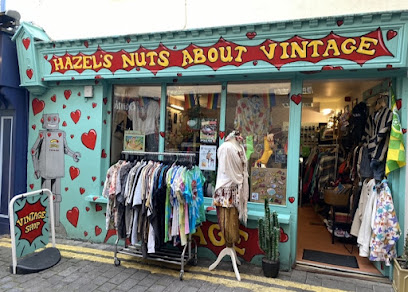
MacBees Boutique Killarney
Explore MacBees Boutique Killarney for exclusive women's clothing and fashion accessories in a charming, vibrant setting that celebrates unique style.

Scarlett Killarney
Discover unique women's fashion and accessories at Scarlett Killarney, a charming boutique in the heart of Killarney, Co. Kerry.

Christys
Explore the best of Irish craftsmanship at Christys, Killarney's premier destination for authentic goods and unique souvenirs.

Kilkenny Design
Discover the essence of Ireland at Kilkenny Design, where exquisite craftsmanship meets rich cultural heritage in the heart of Killarney.

Blackthorn Gift Shop
Explore the charm of Killarney at Blackthorn Gift Shop, your destination for unique Irish gifts and souvenirs that capture the spirit of Ireland.

Killarney Duck Store
Explore the Killarney Duck Store for unique gifts, quirky souvenirs, and a delightful shopping experience in the heart of Killarney.

Essential bars & hidden hideouts
J.M. Reidy's
Discover the heart of Irish culture at J.M. Reidy's, a lively pub in Killarney offering delicious cuisine and a warm, welcoming atmosphere.

Murphys Bar, Restaurant & Townhouse Killarney
Discover Murphys Bar, Restaurant & Townhouse in Killarney for a genuine Irish experience with great food, drinks, and warm hospitality.

The Laurels Pub & Restaurant
Experience the warmth of Irish hospitality at The Laurels Pub & Restaurant in Killarney, where delicious cuisine meets a lively atmosphere.

The Shire Bar & Cafe
Experience the best of Killarney at The Shire Bar & Cafe, where delicious food meets vibrant entertainment in a warm, inviting atmosphere.

Danny Mann Pub
Discover the authentic taste of Ireland at Danny Mann Pub in Killarney, where traditional flavors meet vibrant hospitality.

O'Connors Traditional Pub
Discover the heart of Killarney at O'Connors Traditional Pub, where authentic Irish culture meets a vibrant atmosphere and delightful cuisine.

Celtic Whiskey Bar & Larder
Discover the authentic flavors of Ireland at Killarney's premier gastropub featuring over 500 whiskeys and locally sourced cuisine.
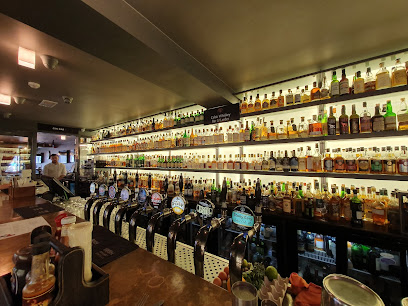
O'Donoghue Public House
Discover the heart of Killarney at O'Donoghue Public House, where traditional Irish food and vibrant live music create a memorable experience.

Courtney's Bar
Discover the vibrant atmosphere of Courtney's Bar in Killarney, where local flavors meet a welcoming environment for an unforgettable experience.

Scotts Bar & Courtyard
Discover Scotts Bar & Courtyard in Killarney: A perfect blend of traditional Irish pub charm and modern culinary delights.

Colgans
Discover the heart of Killarney at Colgans, a gastropub serving up delicious Irish cuisine in a warm and welcoming atmosphere.

Speakeasy Bar
Experience the essence of Ireland at Killarney's Speakeasy Bar, a vibrant pub offering local brews, live music, and authentic Irish hospitality.
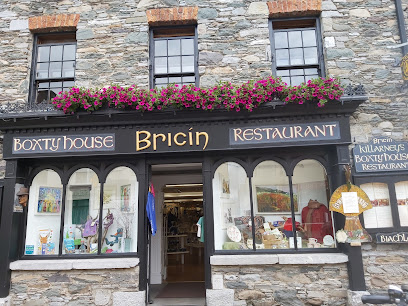
The Lane (Fun Food & Awesome Cocktails)
Experience the vibrant culinary scene at The Lane in Killarney, where delightful brunches and exquisite cocktails await every visitor.

Jimmy Brien's Bar
Discover the vibrant sports bar scene at Jimmy Brien's Bar in Killarney, where delicious food, great drinks, and live sports come together.

The Sportsmans Bar
Experience the heart of Killarney at The Sportsman's Bar, where local brews, hearty meals, and vibrant atmosphere await every visitor.

Local Phrases about Killarney National Park
-
- HelloDia dhuit
[dee-ah gwit] - GoodbyeSlán
[slawn] - YesTá
[taw] - NoNíl
[neel] - Please/You're welcomeLe do thoil
[leh duh hull] - Thank youGo raibh maith agat
[guh rev mah ag-ut] - Excuse me/SorryTá brón orm
[taw brohn or-um] - How are you?Conas atá tú?
[kun-us ah-taw too] - Fine. And you?Tá mé go maith. Agus tú?
[taw may guh mah. ah-guhs too] - Do you speak English?An bhfuil Béarla agat?
[ahn will bayr-lah ah-gut] - I don't understandNí thuigim
[nee hug-im]
- HelloDia dhuit
-
- I'd like to see the menu, pleaseBa mhaith liom an mianú
[bah wah lum on mee-an-oo] - I don't eat meatNí ithim feoil
[nee ih-him foh-il] - Cheers!Sláinte!
[slawn-cheh] - I would like to pay, pleaseBa mhaith liom íoc, le do thoil
[bah wah lum eek, leh duh hull]
- I'd like to see the menu, pleaseBa mhaith liom an mianú
-
- Help!Cabhair!
[kuh-ir] - Go away!Imigh uaim!
[ih-mee uhm] - Call the Police!Glan an Gárda!
[glan ahn gawr-duh] - Call a doctor!Glan an dochtúir!
[glan ahn duch-too-ir] - I'm lostTá mé caillte
[taw may kahl-tuh] - I'm illTá mé tinn
[taw may chin]
- Help!Cabhair!
-
- I'd like to buy...Ba mhaith liom ceannach...
[bah wah lum can-ukh] - I'm just lookingNíl mé ach ag féachaint
[neel may ahk ahg fay-ak-ent] - How much is it?Cé mhéad atá air?
[kay vade ah-taw air] - That's too expensiveTá sé ró-dheacair
[taw shay ro day-care] - Can you lower the price?An féidir leat an praghas a laghdú?
[ahn fay-dur lat ahn prug-hus ah lay-goo]
- I'd like to buy...Ba mhaith liom ceannach...
-
- What time is it?Cén t-am é?
[kayn tahm ay] - It's one o'clockTá sé a haon a chlog
[taw shay ah hayn ah khlog] - Half past (10)Leathuair tar éis a deich
[lah-hoo-ir tar aysh ah deh] - MorningMaidin
[mah-jin] - AfternoonTráthnóna
[traw-noh-nah] - EveningTráthnóna
[traw-noh-nah] - YesterdayInné
[in-ay] - TodayInniu
[in-yoo] - TomorrowAmárach
[ah-maw-rahk] - 1A haon
[ah hayn] - 2Dó
[doh] - 3Trí
[tree] - 4Ceathair
[cah-hir] - 5Cúig
[coo-ig] - 6Sé
[shay] - 7Seacht
[shahkht] - 8Ocht
[ukht] - 9Naoi
[nee] - 10Deich
[deh]
- What time is it?Cén t-am é?
-
- Where's a/the...?Cá bhfuil ...?
[kaw will] - What's the address?Cad é an seoladh?
[kahd ay ahn shoh-lah] - Can you show me (on the map)?An bhfuil tú in ann í a thaispeáint (ar an léarscáil)?
[ahn will too in on ee ah hish-paynt (ahr on layr-skawl)] - When's the next (bus)?Cathain is é an t-iarnród (bus) eile?
[kah-hin is ay ahn teer-nohd (bus) el-eh] - A ticket (to ....)Ticéad (go dtí ...)
[tick-ayd (guh jee)]
- Where's a/the...?Cá bhfuil ...?
History of Killarney National Park
-
The area now known as Killarney National Park has been inhabited for thousands of years. Evidence of ancient settlers can be found in the form of stone circles, standing stones, and other archaeological remnants. These early inhabitants were likely drawn to the region’s rich natural resources and fertile lands.
-
Founded in 1448 by Franciscan monks, Muckross Abbey is one of the most iconic historical landmarks within Killarney National Park. Despite suffering numerous attacks and being burned down multiple times, the abbey’s ruins remain remarkably well-preserved. The yew tree at its center is said to be as old as the abbey itself, providing a hauntingly beautiful focal point.
-
Ross Castle, a 15th-century tower house built by the O'Donoghue clan, stands majestically on the shores of Lough Leane. The castle played a pivotal role during the Cromwellian conquest of Ireland, eventually falling to General Ludlow’s forces in 1652. Today, Ross Castle is a beautifully restored monument offering stunning views and a glimpse into Ireland’s turbulent past.
-
The Great Famine of the mid-19th century had a devastating impact on the Killarney area, as it did on much of Ireland. The population of the region plummeted due to starvation and emigration. The landscape of Killarney National Park still bears some scars from this tragic period, including deserted villages and famine graveyards.
-
In the mid-19th century, the Muckross Estate became a focal point of Victorian grandeur. The estate was extensively renovated for the visit of Queen Victoria in 1861. The opulent Muckross House, constructed in the Tudor style, remains a centerpiece of the park, showcasing the lavish lifestyle of the era’s upper class.
-
Killarney National Park was officially established in 1932 when Senator Arthur Vincent and his parents-in-law, Mr. and Mrs. William Bowers Bourn, donated the Muckross Estate to the Irish Free State. This generous gift laid the groundwork for the park’s conservation efforts, ensuring the protection of its unique landscapes and biodiversity.
-
In 1981, Killarney National Park was designated a UNESCO Biosphere Reserve, recognizing its international importance for conservation. The park is home to a wide variety of habitats and species, including ancient woodlands, upland bogs, and the native red deer. This designation highlights the park’s commitment to preserving its natural and cultural heritage for future generations.
-
Killarney National Park is not only rich in natural beauty but also in cultural heritage. The region is known for its traditional Irish music, dance, and folklore. Local festivals and events often celebrate these cultural aspects, providing visitors with an immersive experience of Ireland’s vibrant traditions.
Killarney National Park Essentials
-
Killarney National Park is located in County Kerry in southwestern Ireland. The nearest major airport is Kerry Airport, approximately 17 kilometers away from Killarney town. From the airport, you can take a taxi, shuttle bus, or rent a car to reach Killarney. Alternatively, you can fly into Shannon or Cork Airports, both around 1.5 to 2 hours' drive from Killarney. If you prefer traveling by train, the town is well connected with regular services from Dublin, Cork, and other major cities. Bus services also operate to Killarney from various locations across Ireland.
-
Within Killarney National Park, the most popular way to get around is by foot, bicycle, or jaunting car (horse-drawn carriage). For those who prefer not to walk or cycle, local taxis are available, and car rentals can be arranged. Public buses connect Killarney town with the park's main entrances and other nearby attractions. Parking is available at various points around the park, but it can fill up quickly during peak tourist seasons, so arriving early is advisable.
-
The official currency in Ireland is the Euro (€). Credit and debit cards are widely accepted in Killarney, including in most hotels, restaurants, and shops. ATMs are readily available in Killarney town, but it is a good idea to carry some cash, especially if you plan to visit more remote areas of the park. It is also prudent to inform your bank of your travel plans to avoid any issues with card transactions.
-
Killarney is generally a safe destination for tourists. However, like any travel destination, it is important to remain vigilant. Avoid leaving valuables in your car and keep an eye on your belongings, especially in crowded areas. There are no specific neighborhoods in Killarney known for high crime rates targeting tourists, but it is always best to stay aware of your surroundings and avoid poorly lit areas at night.
-
In case of an emergency, dial 112 or 999 for immediate assistance from police, fire, or medical services. Killarney town has a hospital with an emergency department. For minor health issues, there are pharmacies in the town where you can purchase over-the-counter medications. It is advisable to have travel insurance that covers medical emergencies.
-
Fashion: Do dress in layers and wear comfortable shoes suitable for walking. Bring rain gear as the weather can be unpredictable. Avoid overly casual attire when dining in upscale restaurants. Religion: Do respect local customs and traditions. When visiting churches or religious sites, dress modestly and be quiet and respectful. Public Transport: Do have exact change or a contactless card for bus fares. Don’t eat or drink on public transport. Greetings: Do greet people with a friendly 'hello' or 'hi'. A handshake is common when being introduced. Eating & Drinking: Do try local dishes and beverages, including traditional Irish stew and a pint of Guinness. Don’t forget to tip in restaurants and pubs; around 10-15% is customary if service is not included.
-
To experience Killarney National Park like a local, start your day early to enjoy the serene beauty of the park before the crowds arrive. Visit the lesser-known trails and lakes for a more secluded experience. Engage with local guides who can offer insightful stories about the park's history and wildlife. Don’t miss the traditional Irish music sessions in local pubs in Killarney town. For a unique experience, take a boat trip on the Lakes of Killarney or hike up Torc Mountain for breathtaking views.
Trending Landmarks in Killarney National Park
-
Ireland
-
Muckross House
-
Ross Castle
-
Torc Waterfall
-
Ladies' View Gift Store Cafe Bar & Roof Terrace
-
Muckross Abbey
-
The Brehon Hotel & Spa
-
The Taproom at Killarney Brewing & Distilling Co.
-
St Mary's Cathedral
-
Cronins Yard
-
Muckross Park Hotel & Spa
-
Wishing Bridge
-
Gleninchaquin Park
-
Knockreer Playground
-
Head of the Gap of Dunloe
Nearby Cities to Killarney National Park
-
Things To Do in Tralee
-
Things To Do in Dingle
-
Things To Do in Cork
-
Things To Do in Kinsale
-
Things To Do in Limerick
-
Things To Do in Ennis
-
Things To Do in Salthill
-
Things To Do in Galway
-
Things To Do in Waterford
-
Things To Do in Kilkenny
-
Things To Do in Athlone
-
Things To Do in Westport
-
Things To Do in Wexford
-
Things To Do in Sligo
-
Things To Do in Dublin











